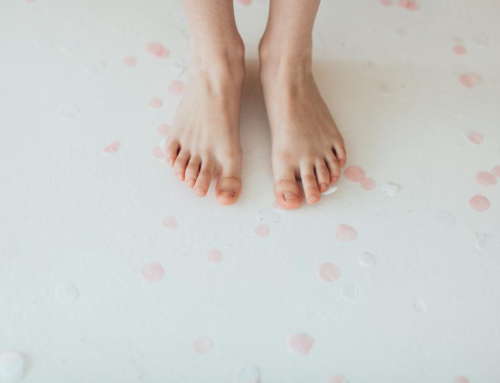Smelly toenails and fingernails are very common symptoms of a nail fungus infection. This is a contagious condition that affects the nail bed under the nail. While toenail fungus is more common than fingernail fungus, both conditions can be embarrassing and frustrating.
This can lead to a detriment to the quality of life that can be difficult to manage. The smell that comes from toenail fungus is often one of the most difficult parts of the condition to manage. Because it isn’t aesthetic in nature, the smell from fungus can be hard to hide from others.
Why are my toenails and fingernails smelly?
Smelly toenails and fingernails are caused by the fungal organisms underneath the nail itself. Sometimes, it can be difficult to differentiate between fungal odor and normal foot odor. There are a few ways to do this.
The fungal spores are trapped underneath the nail. So just washing the surface of the foot won’t be sufficient to eliminate the odor. If you believe that the odor could be caused by a fungal infection, a good idea is to trim your toenails and see if that makes the smell worse.
Symptoms of Fungus
The odor from fingernails is usually easier to pinpoint to fungus because the hands tend to be less sweaty and stinky normally. Therefore, if you smell an odor coming from under your fingernails it is likely that a fungal infection is a cause.
Smelly toenails and fingernails usually come with other symptoms of fungal infection as well. These symptoms can make the fungus easier to identify, but also can be very distressing. Some common aesthetic changes to the nail’s characteristics include discoloration of the nail’s surface. This can form as a white, yellow, brown, or black discoloration that starts small and gets bigger with the growth of the infection.
The discoloration usually starts as a tiny dot or stripe on the nail and can grow to cover the entire nail over time. Aside from discoloration of the nail, nail fungus infection can also cause the nail to become brittle, cracked, and thickened.
Nails in the Summer
Smelly toenails and fingernails are usually at their peak during the summer seasons. Because fungal infections grow more easily in damp, moist, and dark environments, shoes during the summer form their perfect breeding grounds. The sweat that accumulates in shoes and socks throughout the day during a period of hot climate can make toenail fungus more common. Additionally, the heat itself can make the smell from an already present fingernail and/or toenail fungus infection more prominent.
There are steps you can take to reduce the smell from smelly toenails and fingernails. First of all, be sure to wash your hands and feet regularly and thoroughly. This will remove sweat from your hands and feet, and reduce odor from non-fungal sources. You can also try using foot antiperspirants or deodorants to reduce odor as well.
Treatment Options for Fungus
However, the odor caused by your toenail and/or fingernail fungus itself won’t be treated with methods like this. If you don’t treat the fungus under your nail bed, the infection will get worse. This will cause the smell to become worse as well and will make the smell more and more noticeable.
Treating smelly toenails and fingernails can be done in different ways. As mentioned before, some of these treatments are simply a “bandaid” to cover up the smell. These types of treatments, like antiperspirants and deodorants, won’t solve the problem and also won’t help treat the aesthetic changes in the nail’s appearance. What can help with this is an FDA-approved treatment from a licensed podiatrist.
Topical antifungal medications are ineffective at treating fungus since they can’t effectively penetrate the nail to the nail bed where the fungus resides. To avoid this, oral medications actually go through the blood to get to the nail bed.
Laser for Fungus
However, on the way to the toes, they have to pass through the liver, where they can cause toxicity and damage. The safest, most effective treatment for fungus is the PinPointe laser, which typically requires only one treatment to eliminate the fungus and has no side effects or downtime. We have over 150 clinics across the country where this treatment is performed by licensed podiatrists. To see which clinic is closest to you for treatment, visit our website here.



